
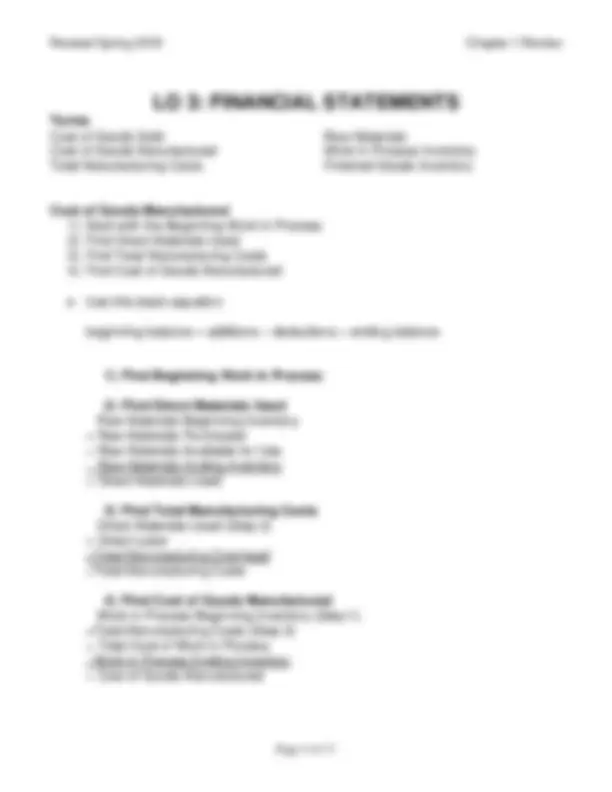
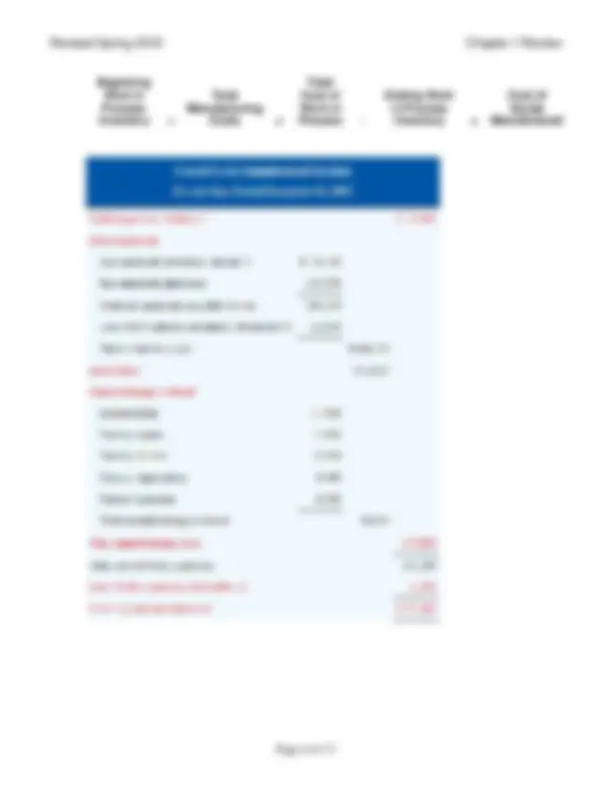
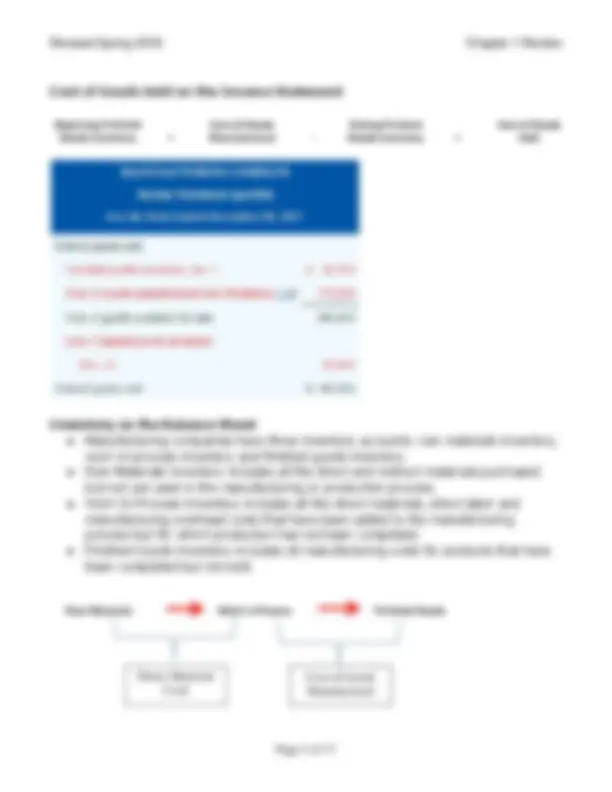
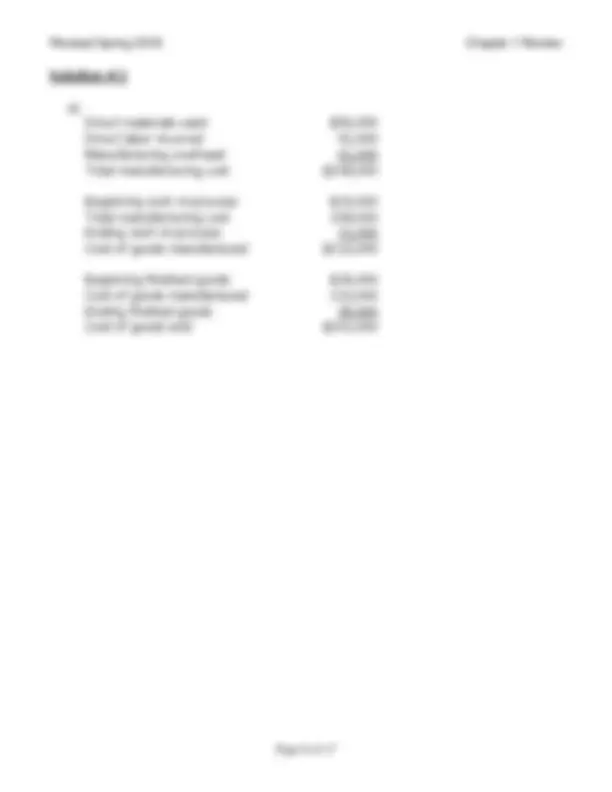
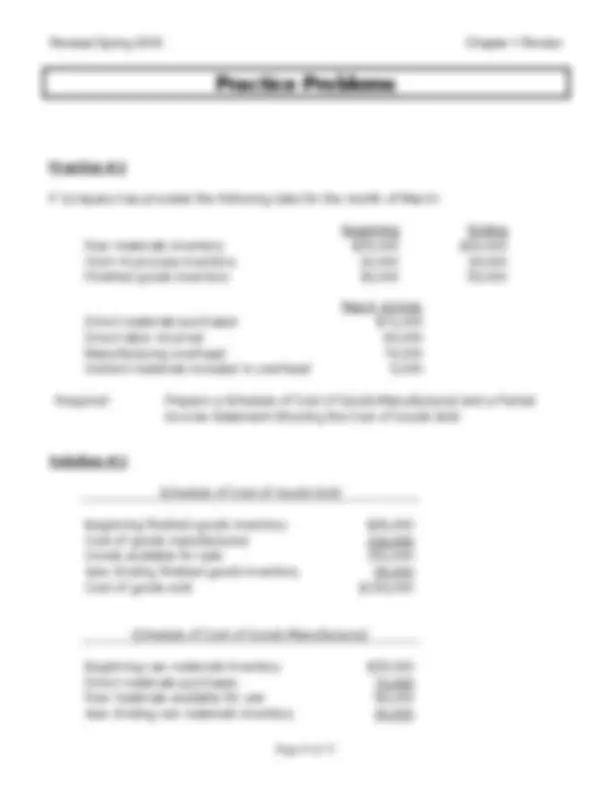
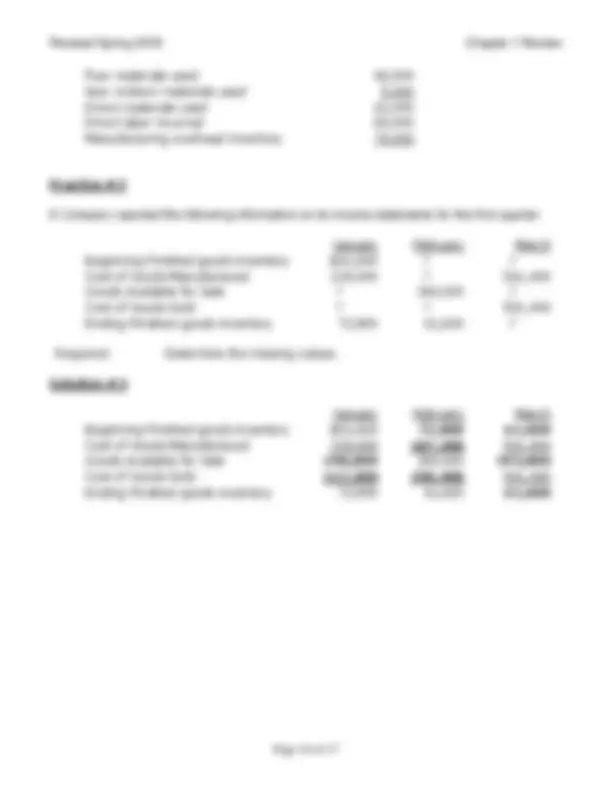
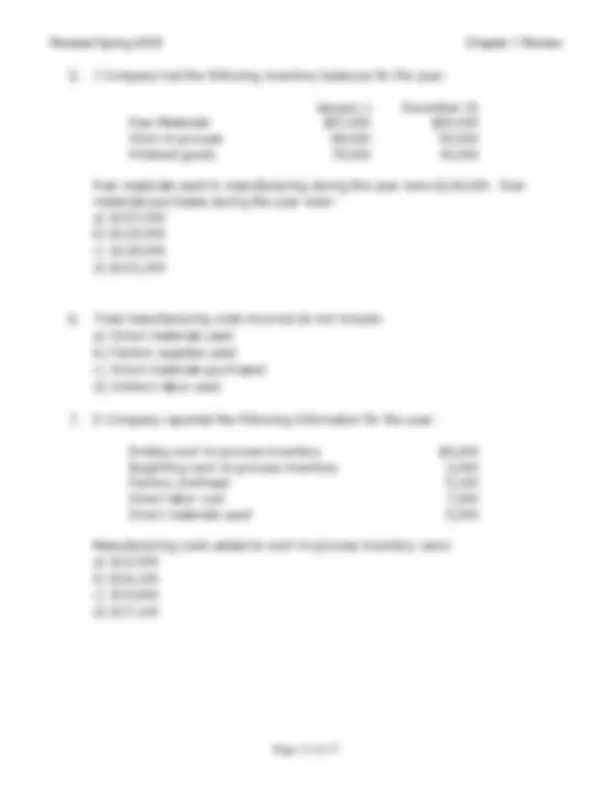
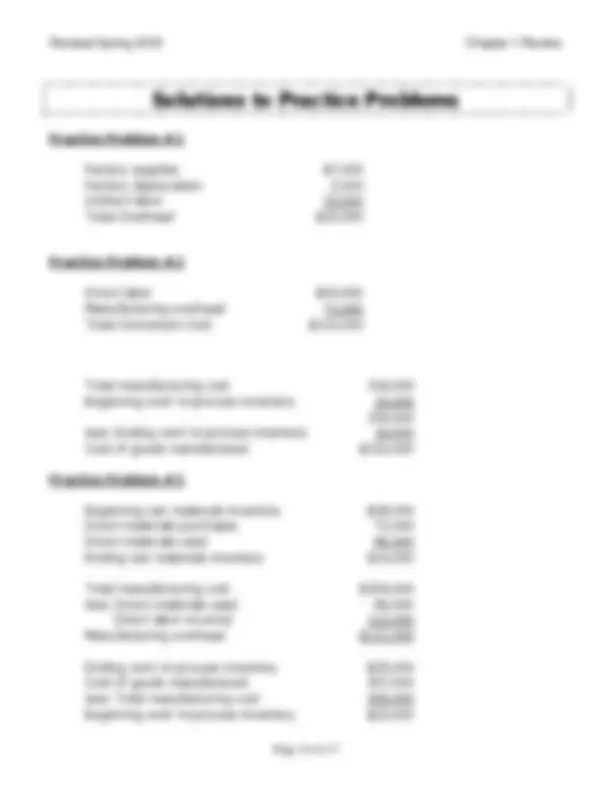
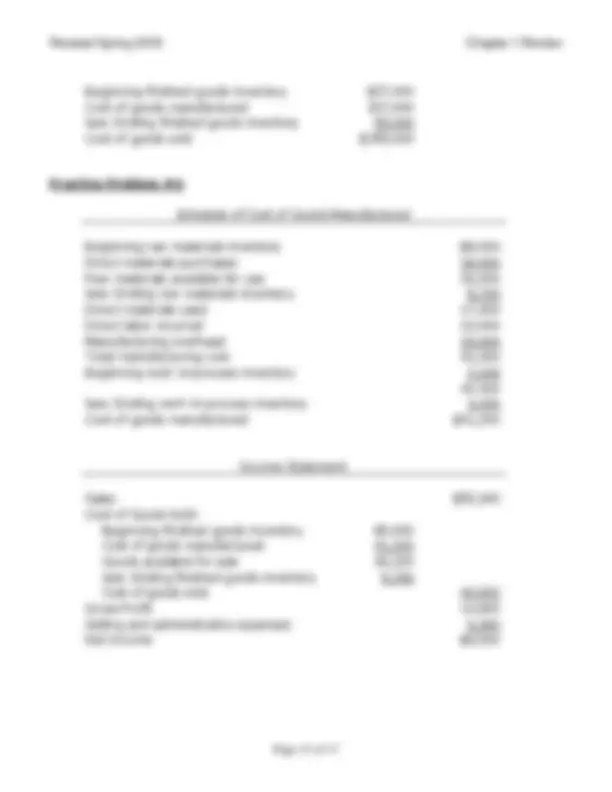


Study with the several resources on Docsity

Earn points by helping other students or get them with a premium plan


Prepare for your exams
Study with the several resources on Docsity

Earn points to download
Earn points by helping other students or get them with a premium plan
Community
Ask the community for help and clear up your study doubts
Discover the best universities in your country according to Docsity users
Free resources
Download our free guides on studying techniques, anxiety management strategies, and thesis advice from Docsity tutors
A detailed explanation of how to calculate Cost of Goods Manufactured and Cost of Goods Sold using the given information. It includes step-by-step instructions, equations, and examples. Students will learn about raw materials inventory, work-in-process inventory, and finished goods inventory, as well as direct materials, direct labor, and manufacturing overhead.
Typology: Lecture notes
1 / 17

This page cannot be seen from the preview
Don't miss anything!










LO 1: Understand the difference in managerial and financial accounting: Financial Managerial External Users Quarterly/Annual Financial Statement General Purpose Reports GAAP - Audited
Internal Users Internal Reports Special Purpose Reports Used for Decision Making Purposes
Understand Management Responsibilities and Structure Responsibilities: Planning: looking ahead to establish objectives that add value to the business Directing: coordinating company’s activities and human resources to operate effectively Controlling: keeping all the activities on track to accomplish objectives Structure:
Terms Direct Materials Indirect Materials Direct Labor Indirect Labor
Manufacturing Overhead Product Cost Period Cost
Manufacturing consists of activities and processes that convert raw materials into finished goods.
Raw Materials: Basic material and parts used in the manufacturing process
Work in Process: Product costs associated with partially completed units
Finished Goods: Completed units that are unsold
PRODUCT COSTS: Manufacturing Costs PERIOD COSTS: Nonmanufacturing Costs Direct Materials Direct Labor Manufacturing Overhead (all indirect costs)
Selling Expenses Administrative Expenses
Practice # Indicate how a manager would assign the following costs to the various categories for a motorcycle company.
Product Costs Direct Materials Direct Labor Manufacturing Overhead
Period Cost
Engines Labor costs Factory Equipment Depreciation Electricity to run factory equipment Advertising Salary of Plant Manager Shipping of finished product Salary of CFO Lubricant for tightening screws Motorcycle seat
Beginning Work in Process Inventory +
Total Manufacturing Costs =
Total Cost of Work in Process -
Ending Work in Process Inventory =
Cost of Goods Manufactured
Cost of Goods Sold on the Income Statement
Beginning Finished Goods Inventory +
Cost of Goods Manufactured -
Ending Finished Goods Inventory =
Cost of Goods Sold
Inventory on the Balance Sheet Manufacturing companies have three inventory accounts: raw materials inventory, work-in-process inventory and finished goods inventory. Raw Materials inventory includes all the direct and indirect materials purchased but not yet used in the manufacturing or production process. Work-In-Process Inventory includes all the direct materials, direct labor and manufacturing overhead costs that have been added to the manufacturing process but for which production has not been completed. Finished Goods Inventory includes all manufacturing costs for products that have been completed but not sold.
Raw Materials Work in Process Finished Goods
Direct Materials Used
Cost of Goods Manufactured
Terms Value Chain Just in Time Inventory Total Quality Management Theory of Constraints Activity Based Costing
Balanced Scorecard Sarbanes-Oxley Act Corporate Social Responsibility Triple Bottom Line
Solution # Indicate how a manager would assign the following costs to the various categories for a motorcycle company.
Product Costs Direct Materials
Direct Labor
Manufacturing Overhead
Period Cost Engines X Labor costs X Factory Equipment Depreciation
X
Electricity to run factory equipment
X
Advertising X Salary of Plant Manager
X
Shipping of finished product
X
Salary of CFO X Lubricant for tightening screws
X
Motorcycle seat X
Raw materials used 66, less: indirect materials used 5 , Direct materials used 61, Direct labor incurred 83, Manufacturing overhead inventory 74 ,
Practice #
D Company reported the following information on its income statements for the first quarter:
January February March Beginning Finished goods inventory $61,600?? Cost of Goods Manufactured 229,000? 531, Goods Available for Sale? 260,000? Cost of Goods Sold?? 531, Ending Finished goods inventory 72,800 61,600?
Required: Determine the missing values.
Solution #
January February March Beginning Finished goods inventory $61,600 72,800 61, Cost of Goods Manufactured 229,000 187,200 531, Goods Available for Sale 290,000 260,000 593, Cost of Goods Sold 217,200 198,400 531, Ending Finished goods inventory 72,800 61,600 61,
True False
January 1 December 31 Raw Materials $57,000 $60, Work-in-process 68,000 50, Finished goods 79,000 40,
Raw materials used in manufacturing during the year were $118,000. Raw materials purchases during the year were: a) $107, b) $115, c) $118, d) $121,
a) Direct materials used b) Factory supplies used c) Direct materials purchased d) Indirect labor used
Ending work-in-process inventory $4, Beginning work-in-process inventory 3, Factory overhead 5, Direct labor cost 7, Direct materials used 5,
Manufacturing costs added to work-in-process inventory were: a) $12, b) $16, c) $13, d) $17,
True
False – cost of goods manufactured are the costs added to finished goods inventory. Total manufacturing costs are the direct materials, direct labor and overhead added to work-in-process.
False – they are different statements.